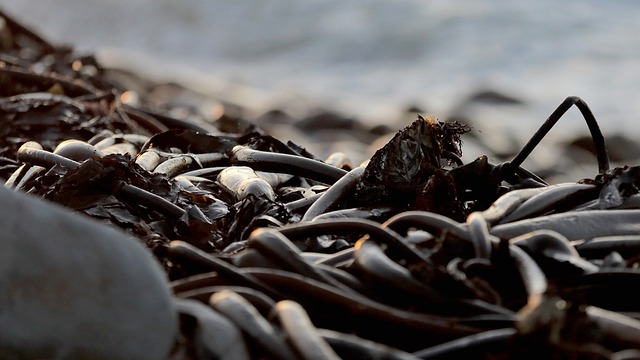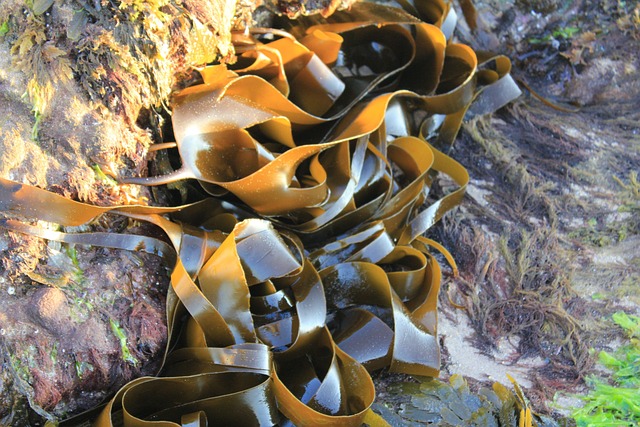Introduction: Why It’s Important to Move Kelp After a Storm
After a storm, coastal areas are often littered with debris, including large quantities of kelp washed ashore. While kelp plays a crucial role in marine ecosystems, its accumulation on beaches can pose challenges for local communities and ecosystems. Learning how to effectively move kelp after a storm is essential for maintaining beach health, promoting tourism, and protecting marine life.
When storms hit, the powerful waves uproot kelp forests, depositing them along shorelines. This natural phenomenon, while critical for nutrient recycling, can become problematic when excessive kelp disrupts local habitats, blocks access to beaches, or emits unpleasant odors as it decomposes. For coastal communities, managing kelp accumulation becomes a priority.
In this article, we’ll explore the best practices to move kelp after a storm safely and efficiently. You’ll learn about environmentally friendly methods, the importance of preserving marine life during cleanup efforts, and how to use removed kelp for sustainable purposes. By the end of this guide, you’ll have the knowledge to handle storm-washed kelp effectively while protecting the delicate balance of coastal ecosystems.
Understanding the Impact of Storm-Washed Kelp on Coastal Areas
Storm-washed kelp has both positive and negative effects on coastal regions. On the positive side, kelp provides essential nutrients for dune vegetation, stabilizing the shoreline against erosion. However, excessive kelp can:
- Smother delicate plants, hindering their growth.
- Create barriers for nesting shorebirds and other wildlife.
- Deter beachgoers due to unsightly piles and foul odors.
Balancing the ecological benefits and drawbacks is key when deciding to move kelp after a storm.
Tools and Equipment Needed to Move Kelp After a Storm
To ensure an efficient cleanup process, the right tools are essential. These may include:
- Rakes and Shovels: For manually collecting smaller piles of kelp.
- Wheelbarrows or Carts: To transport kelp efficiently across the beach.
- Heavy Machinery: Such as tractors or bulldozers for large-scale cleanup efforts.
- Protective Gear: Gloves and boots to safeguard against cuts or sharp objects.
- Storage Containers: To collect and transport kelp for recycling or composting.
Proper equipment minimizes labor intensity and ensures a safer process.
Environmental Considerations When You Move Kelp After a Storm
While cleaning up kelp, it’s vital to prioritize environmental preservation. Key considerations include:
- Avoid Disturbing Wildlife: Shorebirds and marine creatures often seek shelter in kelp piles.
- Preserve Native Plants: Use gentle techniques to avoid uprooting coastal vegetation.
- Recycle Kelp Sustainably: Compost kelp or use it as organic fertilizer for local farming.
- Monitor Ecosystem Health: Track changes in dune vegetation and wildlife activity.
Adopting eco-friendly practices ensures that efforts to move kelp after a storm support long-term coastal health.
Steps to Safely and Efficiently Move Kelp After a Storm
Assess the Situation
Evaluate the volume of kelp and identify areas requiring immediate attention.Plan Cleanup Logistics
Coordinate with local authorities or volunteer groups to organize a systematic cleanup.Prioritize Safety
Wear protective gear and be cautious of sharp debris or hazardous materials mixed with kelp.Begin Removal
Use rakes or machinery to collect kelp, taking care to leave some for nutrient recycling.Dispose or Reuse Kelp
Transport kelp to composting facilities, farms, or designated disposal sites.
These steps streamline the process of moving kelp while ensuring efficiency and safety.
Utilizing Removed Kelp for Sustainable Purposes
Rather than discarding storm-washed kelp, consider repurposing it:
- Composting: Kelp’s nutrient-rich composition makes it an excellent addition to compost piles.
- Fertilizer: Processed kelp can be used to enhance soil fertility in gardens and farms.
- Livestock Feed: Dried kelp serves as a nutritious supplement for livestock.
- Artisanal Products: Craft items such as paper or textiles using dried kelp fibers.
Creative uses for kelp minimize waste and contribute to sustainable living.
Challenges and Solutions When You Move Kelp After a Storm
Managing storm-washed kelp isn’t without challenges. Common issues include:
- Large Volumes of Kelp: Deploy heavy machinery for large-scale cleanups.
- Access Difficulties: Use lightweight tools for hard-to-reach areas.
- Environmental Sensitivities: Collaborate with ecologists to minimize habitat disruption.
Overcoming these challenges requires careful planning and resource allocation.
Collaborating with Communities to Move Kelp After a Storm
Community involvement is critical for successful kelp removal efforts. Strategies include:
- Volunteer Programs: Engage local residents in beach cleanups.
- Educational Campaigns: Raise awareness about the importance of responsible kelp management.
- Partnerships: Work with environmental organizations to secure resources and expertise.
Collective action amplifies the impact of efforts to move kelp after a storm.
Long-Term Strategies for Managing Kelp Accumulation
Proactive measures can reduce the need for extensive kelp removal after storms. Consider these strategies:
- Dune Restoration Projects: Strengthen natural barriers to limit kelp accumulation.
- Storm Monitoring Systems: Predict and prepare for kelp influxes.
- Sustainable Beach Practices: Minimize human activities that exacerbate kelp buildup.
Long-term planning ensures more sustainable coastal management.
Conclusion: Mastering the Art of How to Move Kelp After a Storm
Effectively learning to move kelp after a storm is an essential skill for preserving the health and accessibility of coastal areas. By understanding the impact of storm-washed kelp, using appropriate tools, and prioritizing environmental considerations, you can address this challenge effectively and sustainably.
The techniques outlined in this guide not only ensure efficient kelp removal but also promote sustainable practices, such as repurposing kelp for eco-friendly uses. Community involvement and long-term planning further enhance the resilience of coastal ecosystems against future storms.
By mastering these methods, you’ll contribute to healthier beaches, thriving marine life, and a cleaner environment. With thoughtful execution, the task of moving kelp transforms from a daunting chore into an opportunity for ecological stewardship.

Share this:
- Click to share on Facebook (Opens in new window) Facebook
- Click to share on X (Opens in new window) X
- Click to share on LinkedIn (Opens in new window) LinkedIn
- Click to share on Reddit (Opens in new window) Reddit
- Click to share on X (Opens in new window) X
- Click to share on Threads (Opens in new window) Threads
- Click to share on WhatsApp (Opens in new window) WhatsApp




